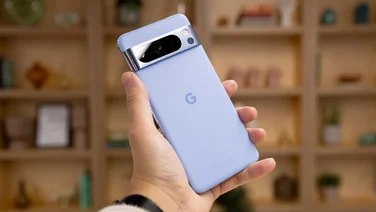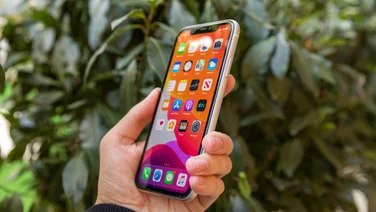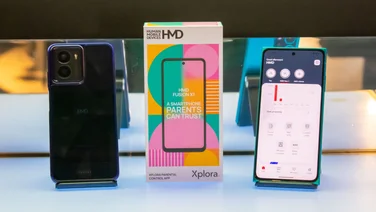To help us provide you with free impartial advice, we may earn a commission if you buy through links on our site. Learn more
- Samsung Galaxy S8 Plus review
- Samsung Galaxy S8 Plus review: What you need to know
- Samsung Galaxy S8 Plus review: Price and comparison
- Samsung Galaxy S8 Plus review: Design
- Samsung Galaxy S8 Plus review: Display
- Samsung Galaxy S8 Plus review: Performance and battery life
- Samsung Galaxy S8 Plus review: Bixby
- Samsung Galaxy S8 Plus review: Camera
- Samsung Galaxy S8 Plus review: Verdict

















- Positively gorgeous
- More of that beautiful display
- The best smartphone performance so far
- Doesn't offer much more than regular S8
- Expensive
News update: Samsung Galaxy S10 Plus arrives
With the Galaxy S8’s second birthday fast approaching, Samsung has announced the Galaxy S10 and S10 Plus. Its best-ever handset, the Galaxy S10 Plus improves on its predecessor in a number of ways, including a better-looking screen, a near-complete redesign, and a healthy performance upgrade.
Should you upgrade, though? Well, at this early stage I’m going to suggest holding onto your wallet for a little while longer. The Galaxy S8 Plus is still a remarkable smartphone, even by 2019 standards, and the Galaxy S10’s launch price is rather pricey after all. Hold on just a little longer and it’ll dip in price soon enough.
My original Samsung Galaxy S8 Plus review continues below.
Samsung Galaxy S8 Plus review
Before Samsung’s plus-sized flagship – the Galaxy S8+ – was in my hands, I scoffed at it not warranting a full review. “It’s exactly the same phone” I screamed at the unveiling, to disapproving glares from the Samsung execs sat a few rows down. I wasn’t impressed at first, but would I still stand by those harsh criticisms after getting it my hands?
Well, I’m still looking for the differences. Of course, the S8 Plus is bigger than the regular Samsung Galaxy S8. Its screen is 0.4in larger on the front, which adds up to a monstrous 6.2in display, compared with the S8’s 5.8in screen.
And that extra size also means the S8 Plus has a larger battery – you’re getting an extra 17% capacity here, up from 3,000mAh to 3,500mAh. But that’s your lot. Having searched in vain for extra incentives to spend an extra £100, I’ve found none.
Samsung Galaxy S8 Plus review: What you need to know
In short, this is Samsung’s biggest flagship, and the phone the firm really wants you to buy in 2017 above all else. It’s not as massive as you might think either: essentially it’s a 6.2in phone crammed into a typical 5.7in body. How does it achieve this feat of technical wizardry? Well, minimal screen bezels of course.

















Just like LG’s G6, its front is almost all display – with just a splash of bezel on the top and bottom. It’s a looker, and it will all the smartphone beauty pageants this year. It boasts the very latest, high-performance internals, it has a very good battery life and a camera that’s simply superb.
Samsung Galaxy S8 Plus review: Price and comparison
What’s Samsung’s biggest competition, then? Well, there’s that regular-sized S8 handset to contend with. Launching in two (not very distinct) flavours, Samsung may have shot itself in the foot here and I expect most will flock to the cheaper handset when they see both on Carphone Warehouse’s shelves.
READ NEXT: The best smartphones to buy
And then there’s the LG G6. Time is on LG’s side, having launched its big-screened phone way back at MWC, but following the S8 announcement a month or so back, it’s already clear who the winner is. Samsung’s handset is far more refined, with its curved edge display, better build quality and fancier internals. The G6 is cheaper costing £530 (£650 at launch).
Samsung Galaxy S8 Plus review: Design
Take it out of the box, power it on, and you’ll notice that the 6.2in display completely dominates affairs on the front. It really is a sight to behold and I urge you to give the phone a feel when you’re in the shops. Seeing really is believing and Samsung has done a tremendous job here.
It may be bigger than the regular S8 – that much should be clear by now – but the aesthetic differences end there. There’s still Gorilla Glass 5 on the front and back, it’s IP68 dust- and water-resistant for a little more peace of mind, and it can be picked up in silver, blue or black.

















You’d think that 6.2in display would render a phone useless but there you’d be wrong. Samsung’s Galaxy S8 Plus isn’t that much bigger than the regular-sized S8, with Samsung keeping the width down to a paltry 73.4mm. Surprisingly, it’s very comfortable to use in just one hand.
You better have deep pockets, though, as the S8 Plus is pretty lanky. At just shy of 160mm tall, it’s half a centimetre taller than the Pixel XL, and might be tricky to squeeze into shallow pockets. Why the long face? Well, it’s perfect for entertainment.
READ NEXT: Samsung Galaxy S8 review
Samsung Galaxy S8 Plus review: Display
The beauty of the Samsung Galaxy S8 Plus doesn’t only reside in its physical design and appearance, however. A good part of what makes it such a great smartphone is the quality of its AMOLED display.
That massive 18.5:9 display amplifies the entire viewing experience, while still retaining those pitch perfect colours we’ve come to expect from Samsung in recent times. Oh, and it’s bright, reaching a blinding 912cd/m2 on auto brightness.

















Like its smaller brother, sRGB colour gamut coverage is perfect, with ludicrously deep blacks and perfectly poised, vibrant colours. There’s little oversaturation, too – something Samsung has been guilty of veering towards in the past. Simply put, this is one of the best displays I’ve ever had the pleasure of watching funny cat videos on
One niggle, and this is not necessarily entirely Samsung’s fault, comes from apps not taking full advantage of this big-screened viewing experience. YouTube, and Samsung’s own video player, come well-equipped for 18.5:9 viewing – fitting content to the screen, but Netflix and others still display video in bog-standard 16:9 format with black bars flanking the display to the left and right. I fully expect the developers in question to issue updates to fix this issue in time, though.
Samsung Galaxy S8 Plus review: Performance and battery life
Guess what? The Samsung Galaxy S8 Plus’ performance is identical to the regular S8 alternative. Both come equipped with exactly the same internal specifications after all – with Samsung’s own Exynos 8895 or Qualcomm’s Snapdragon 835 if you live in the States, paired with 4GB of RAM. I’d better reaffirm the results for the sake of this review, though.
It gains a Geekbench 4 multi-core score of 6,598, surpassing everything that’s come before it and a single-core score of 2,008. In short, you’ll be well-equipped to tackle any future apps or OS updates for the years to come. Not convinced? Here’s a performance comparison chart.

That bigger battery gives us a slight lifespan difference, too, with the 3,500mAh battery bumping the S8 Plus’ battery life to 20hrs 30mins in our standard video playback battery test. That’s three hours ahead of the regular S8 and well in front both the LG G6 and Google Pixel XL. It’s still not a patch on Lenovo’s £200 P2, mind.

Samsung Galaxy S8 Plus review: Bixby
Now, chances are you’ve heard of Bixby by now. The firm’s Alexa, Google Assistant and Siri competitor might sound like a snooty English butler, and sadly – it’s not all that impressive in its current state.
At the time of writing, those voice-controlled features aren’t available in the UK yet, so we’re stuck with those middling features that aren’t quite so fancy. There’s this Bixby Vision feature, that works with the camera – letting you know what it is you’ve pointed the lens at.

















The aim of the game is to point the camera at some shopping – and it’ll give you online shopping links of the best prices. If you spot a landmark too, it’ll bring up information (likely pulled from Wikipedia). The problem is, this is of little use if any – the recognition is patchy at best, and it thought my face was Jason Statham’s. It must be my rugged physique.
There’s also a personalised newsfeed – similar to the way Google Now does things. It’s also not all that exciting and doesn’t offer anything in the way of an improvement on a feature we’re already familiar with. Now, my cynical view may change once that voice feature comes over to the UK, but I’ll have to update this review in due course.
Samsung Galaxy S8 Plus review: Camera
The rear camera seems to have gone unchanged from last year’s Galaxy S7 flagships, certainly from the point of view of specifications. Resolution remains at 12-megapixels, the aperture f/1.7 aperture is the same as last year, and there’s optical image stabilisation and dual-pixel autofocus. But, there is one slight change that shouldn’t be overlooked.
READ NEXT: The best phone camera in 2017
Thanks to the new Exynos 8895 chipset the camera gets new multi-shot image processing, where three frames are captured in quick succession every time you press the shutter button. These are then morphed into one image in an effort to create the sharpest still image possible.

















It’s a bit like the Pixel’s HDR+ technique, where ten images are combined together in a similar way. Because of this, images do look sharper than on the S7, especially in low light.
Put test shots side by side with the Pixel XL on the other hand, and quality falls a little flat. The S8 Plus tends to oversaturate images in comparison and obscure fine details with over-processing. It also has a tendency, even with auto HDR enabled, to blow out highlights in extremely, but I’m nit-picking here. It’s still a fantastic camera.
Samsung Galaxy S8 Plus review: Verdict
The Samsung Galaxy S8 Plus is very much a five-star handset. It’s big, bold and resoundingly beautiful, but the thing that holds it back? There’s still that regular-sized S8 to contend with.
That’s the sticking point and the main reason I’ve knocked a star off. My hand has been forced: there’s simply not enough extra here to warrant the higher price over the regular S8, notwithstanding the added 0.4in of screen real estate and bump in battery life. Don’t pick up the S8 Plus, double down on its baby brother and save a few pennies instead.








